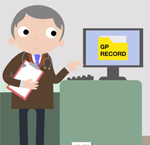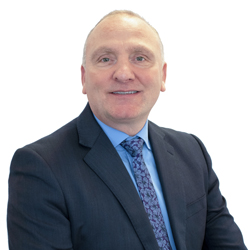Palliative patient data that improves care across the Fylde coast
Blackpool Teaching Hospitals NHS Foundation Trust are using the Medical Interoperability Gateway (MIG) to share patient Electronic Palliative Care Coordination System Records (EPaCCs) across a variety of different health and care organisations.
Background
Blackpool Teaching Hospitals NHS Foundation Trust provides a range of acute services to the 330,000 population on the Fylde coast as well as a range of community health services to the 445,000 residents of Blackpool, Fylde, Wyre and North Lancashire.
Previously, healthcare staff had no consistent way of recording and sharing an individuals end of life preferences electronically and relied on a paper-based system. With limited information about care planning, there was an increased risk of unnecessary admission and delays in discharge.
To provide continuity of care to patients, the Trust looked to make it easier for health care professionals to access a patient EPaCCs record electronically. With access to an EPaCCs record, a patient’s preferences and key details about their end of life care could be shared across organisations to improve coordination of care, planning care and anticipation of crisis.
What did they do?
In 2016 the Trust implemented the MIG’s Detailed Care Record (DCR) and EPaCCs Dataset. They began by accrediting their in-house system ‘Nexus’ to allow integration with the MIG. This was followed by integrating Adastra used by the Out of Hours services (OOH). With the MIG successfully integrated, the EPaCCs dataset was then available to healthcare professionals as an embedded view in the system they used day to day, by clinicians in accident and emergency (A&E), acute medical unit (AMU), frailty wards and community nurses.
Today, using the MIG the OOH service views vital EPaCCs information as an embedded view in Adastra. On accessing patient records, clinicians are notified by an alert if an EPaCCs record exists and are prompted to view at the point of care.
Reducing unnecessary admissions
This information is also being used to inform The North West Ambulance Service (NWAS) in particular, paramedics.
When a patient or relative calls the 111 service, call handlers can respond efficiently by accessing EPaCCs information. An alert notifies the call handler the patient is under the care of the care coordination service and that an EPaCCs is in place. The patient is then directed to the care coordination team in OOH to receive direct access to a GP.
The benefits of accessing an EPaCCs record
The Trust has found the MIG invaluable. Instant access to real-time patient information supports medical decisions in line with patient wishes.
“EPaCCs has provided a platform for end of life decisions and conversations to be documented and shared in such a way that clinicians in both the community and acute settings can access it. This has meant that patients who might otherwise have faced either a lengthy hospital stay or death in a hospital bed are now much more likely to be cared for and die in their preferred place.”
Victoria Dixon, End of Life Clinical Lead, Community Health Division, Blackpool Teaching Hospitals NHS Foundation Trus
A holistic view of a patient’s medical record and end of life desires is presented in one view, including background information about medications, end of life care status and any prior discussions about the preferences and treatment decisions of the patient, which is crucial to the coordination and delivery of palliative care. This ensures everyone involved in a patients care plan can see their wishes and any care they receive is in line with what they have decided.
In Blackpool the MIG has allowed a patient’s care plan to be followed:
“A patient presented at the Emergency Department (ED) who was in the last days of his life, all the appropriate arrangements were in place to care for him at home and he had an EPaCCS record. Upon arrival in ED the patient was not able to communicate and his wife was too upset to communicate effectively. We were able to access his EPaCCS record and establish that his GP had spoken to him about his preferred place of death and that he wanted to be at home. As a result of this the patient was taken home where he died peacefully in-line with his wishes. Without having access to the MIG, the patient would undoubtedly have been admitted.”
Lorraine Tymon, End of Life Care Facilitator, Blackpool Teaching Hospitals
The creation and accessing the EPaCCs record allowed the patient’s wishes to be fulfilled and enabled the best outcome for both the patient and family.
From a clinician’s point of view, being able to access the EPaCCs record enables clinical staff to make more informed decisions around care and treatment, whilst recognising the patient’s wishes and preferences.
Find out more
To find out how your organisation can access the MIG EPaCCs dataset or to arrange an online demonstration, get in touch here.
Recent case studies
Contact us
To find out more about our solutions, get in touch.






